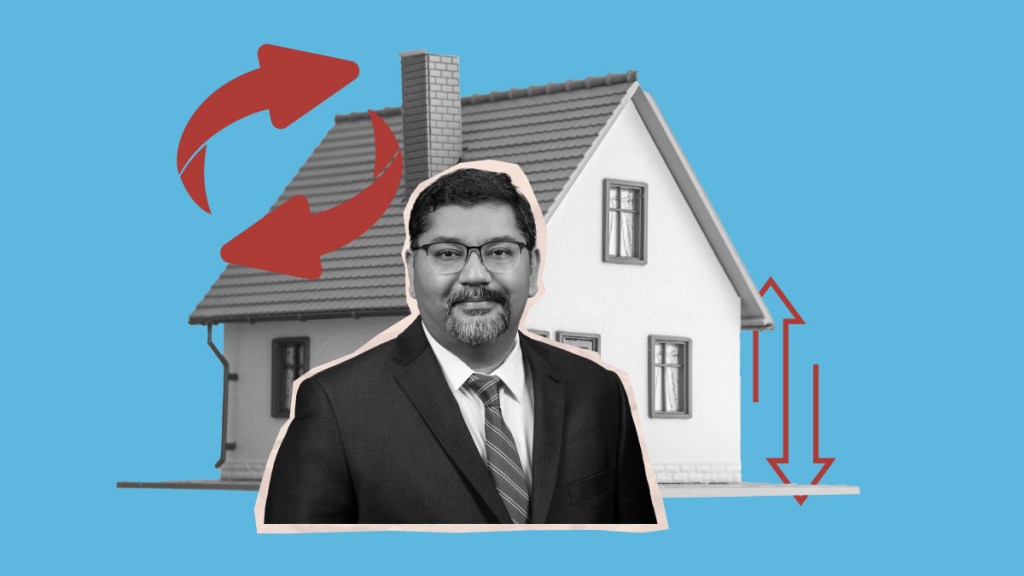Ginnie Mae on Monday released a final term sheet for its new, complementary Home Equity Conversion Mortgage (HECM)-backed Securities (HMBS) program referred to as “HMBS 2.0.”
Ginnie Mae has been developing the final term sheet in consultation with reverse mortgage industry stakeholders and comments submitted to the government-owned company. The final term sheet arrives after “an extensive stakeholder engagement process and public comments received after the June 2024” publication of the initial term sheet, the company said.
Among the provisions of the final term sheet, it defines HECM collateral criteria and the guidelines of HMBS issuers to be eligible for the new program; extends the mandatory buyout threshold to 150% of the HECM maximum claim amount (MCA); caps pooling participation at 95% “to incentivize issuers to mitigate risks to taxpayers;” and allows securitization of certain loan advances, “including those related to due and payable loans,” the company explained.
The term sheet also revises pool certification requirements to “account for foreclosure or legal documentation challenges” while using “alternative property valuation methods.” It makes a series of adjustments to the maximum adjusted property value ratio (MAPVR) to include “70% MAPVR for HECM loans bought out before the program’s implementation” and “60% MAPVR for other HECM loans.”
MAPVR that is determined at the time loans are pooled can also qualify for additional participations. And the term sheet specifies “HMBS 2.0 pool types to provide clarity and alignment with program requirements.”
Sam Valverde, the acting president of Ginnie Mae, said the new terms are indicative of the company’s commitment to the reverse mortgage space and its goal to enhance liquidity for participants.
“The finalized HMBS 2.0 term sheet demonstrates Ginnie Mae’s commitment to providing innovative solutions for the reverse mortgage industry,” Valverde said. “This program will facilitate much-needed liquidity for Issuers while improving the stability of the government-backed reverse mortgage market.”
Valverde previously announced his resignation from Ginnie Mae effective Nov. 30. In recognition of that, he referred to HMBS 2.0 as his “final major initiative at Ginnie Mae,” adding that he is “proud to see the critical policy work completed.”
The company also released analysis about the new term sheet that is authored by senior policy adviser Karan Kaul and Stephanie Schader, Ginnie Mae’s director of mortgage-backed securities policy and program development.
“The primary objective of HMBS 2.0 is to mitigate Issuers’ liquidity stress when HECMs bought from traditional [HMBS] pools cannot be immediately assigned for an insurance claim to the Federal Housing Administration (FHA) because of incomplete documentation, a borrower in default status, or [if] the property is in disrepair,” the analysis reads.
“Under the proposal, active and nonactive HECM buyouts with an outstanding principal balance of no less than 98% and no greater than 148% of the [MCA] would be eligible for pooling into new custom, single-issuer pools subject to meeting additional individual loan requirements.”
The analysis also explained some of the process for incorporating feedback from the industry and other stakeholders.
“Ginnie Mae held substantial stakeholder engagement in developing the final terms for HMBS 2.0 and appreciates the industry’s cooperation and feedback,” the analysis reads. “Ginnie Mae carefully analyzed the feedback received and made changes where possible. In some cases, Ginnie Mae was able to make partial changes and retained the original proposal in others.”
One of the organizations that engaged in discussions about the new program is the National Reverse Mortgage Lenders Association (NRMLA). Steve Irwin, the president of the association, said he is pleased to see the term sheet published but also emphasizes the importance of the next steps in fully implementing the program.
“I would like to commend GNMA for getting this term sheet finalized, and the strong work of the NRMLA HMBS Issuer Committee in its collaborative effort to provide industry-wide feedback to the GNMA RFIs on this matter,” Irwin said in a statement to HousingWire’s Reverse Mortgage Daily (RMD).
“It is now imperative that GNMA, HMBS Issuers, HECM Servicers and HECM Subservicers focus their attention on getting this critically important program implemented so the liquidity strains created by non-active buyouts can be relieved,” he said.
Leo Wong, partner and head of loan strategy at Waterfall Asset Management also reacted positively to the term sheet’s release.
“We believe this program greatly enhances liquidity for HUD’s HECM program, GNMA’s portfolio and allows originators to focus on creating loans while retaining appropriate risk structures,” Wong said in a statement to RMD. “We very much applaud GNMA’s efforts with publishing this final term sheet among all their other priorities we are confident the industry will work quickly to implement with the GNMA leadership team.”
With the impending transition of power to the incoming administration of president-elect Donald Trump, the implementation timeline for the program is currently uncertain. Lawmakers have called for a stay on major policy development and personnel appointments ahead of the January inauguration, but for its part, Ginnie Mae said it is moving forward with implementation processes.
“With the policy work completed, Ginnie Mae is now focused on program implementation and is working closely with vendors and contractors to establish a comprehensive work schedule and completion timeline,” the company said.
Editor’s note: This story has been updated with a statement from Leo Wong, partner and head of loan strategy at Waterfall Asset Management.





